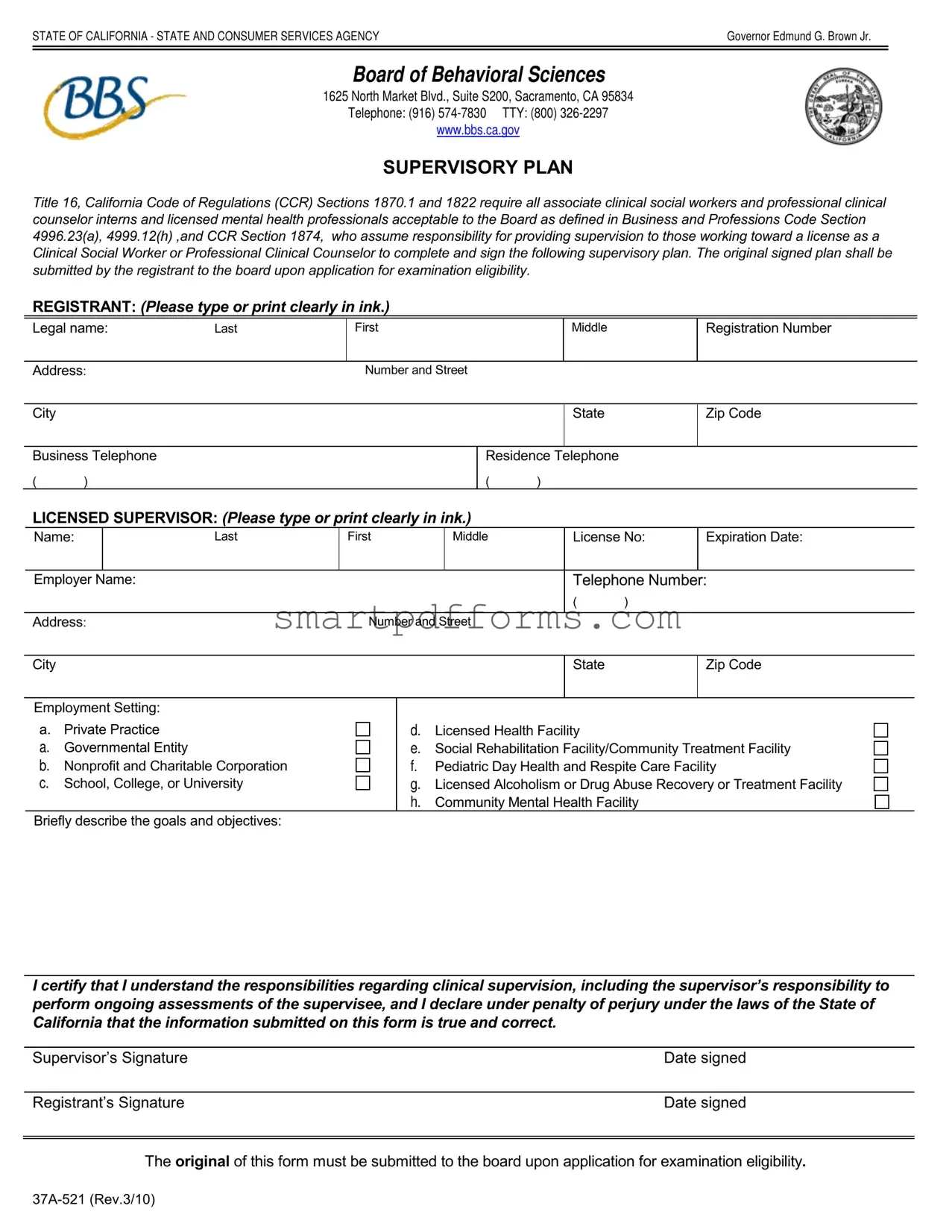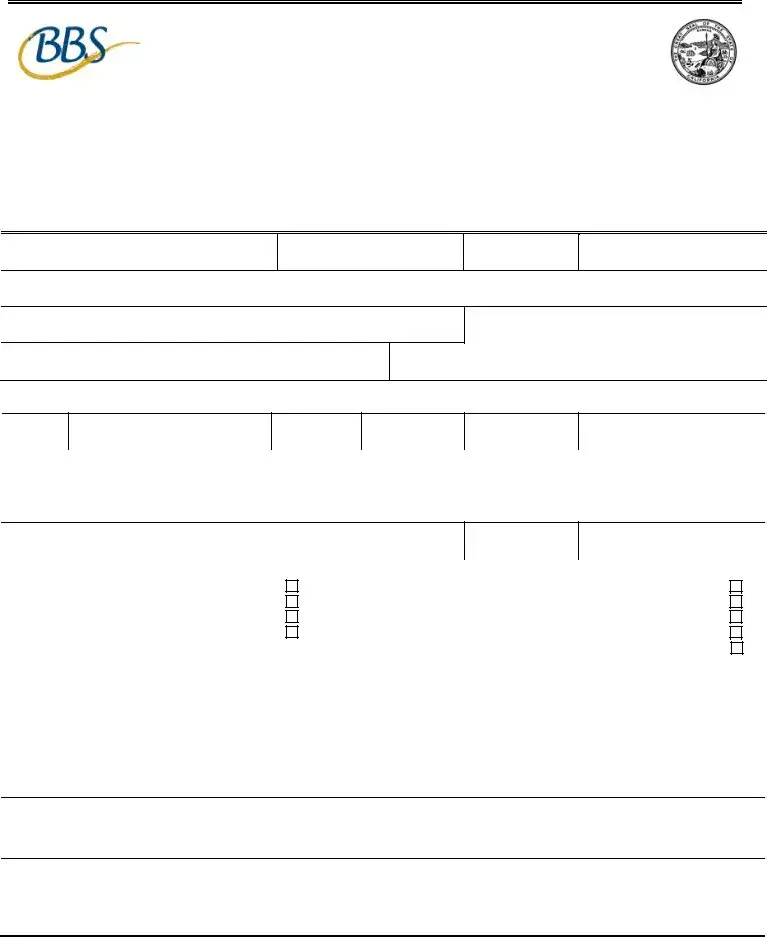STATE OF CALIFORNIA - STATE AND CONSUMER SERVICES AGENCY |
Governor Edmund G. Brown Jr. |
BOARD OF BEHAVIORAL SCIENCES |
|
1625 North Market Blvd., Suite S200, Sacramento, CA 95834
Telephone: (916) 574-7830 TTY: (800) 326-2297
www.bbs.ca.gov
SUPERVISORY PLAN
Title 16, California Code of Regulations (CCR) Sections 1870.1 and 1822 require all associate clinical social workers and professional clinical counselor interns and licensed mental health professionals acceptable to the Board as defined in Business and Professions Code Section 4996.23(a), 4999.12(h) ,and CCR Section 1874, who assume responsibility for providing supervision to those working toward a license as a Clinical Social Worker or Professional Clinical Counselor to complete and sign the following supervisory plan. The original signed plan shall be submitted by the registrant to the board upon application for examination eligibility.
REGISTRANT: (Please type or print clearly in ink.)
Address: |
Number and Street |
City
Business Telephone
()
LICENSED SUPERVISOR: (Please type or print clearly in ink.)
Employer Name: |
|
Telephone Number: |
|
|
( |
) |
|
|
|
|
Address: |
Number and Street |
|
Employment Setting: |
|
|
a. |
Private Practice |
d. |
Licensed Health Facility |
a. |
Governmental Entity |
e. |
Social Rehabilitation Facility/Community Treatment Facility |
b. |
Nonprofit and Charitable Corporation |
f. |
Pediatric Day Health and Respite Care Facility |
c. |
School, College, or University |
g. |
Licensed Alcoholism or Drug Abuse Recovery or Treatment Facility |
|
|
h. |
Community Mental Health Facility |
Briefly describe the goals and objectives:
I certify that I understand the responsibilities regarding clinical supervision, including the supervisor’s responsibility to perform ongoing assessments of the supervisee, and I declare under penalty of perjury under the laws of the State of California that the information submitted on this form is true and correct.
Supervisor’s Signature |
Date signed |
|
|
Registrant’s Signature |
Date signed |
The original of this form must be submitted to the board upon application for examination eligibility.
37A-521 (Rev.3/10)

